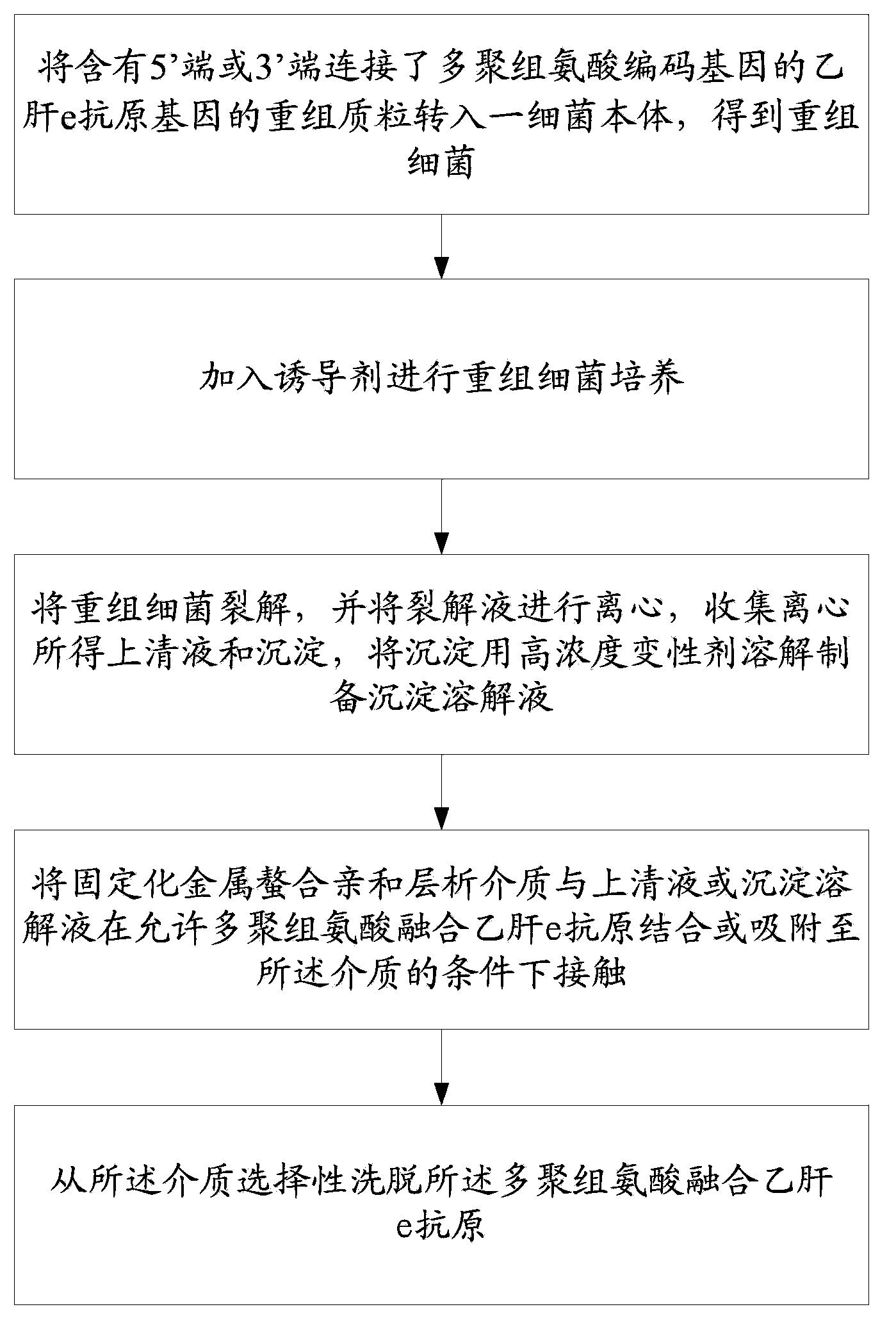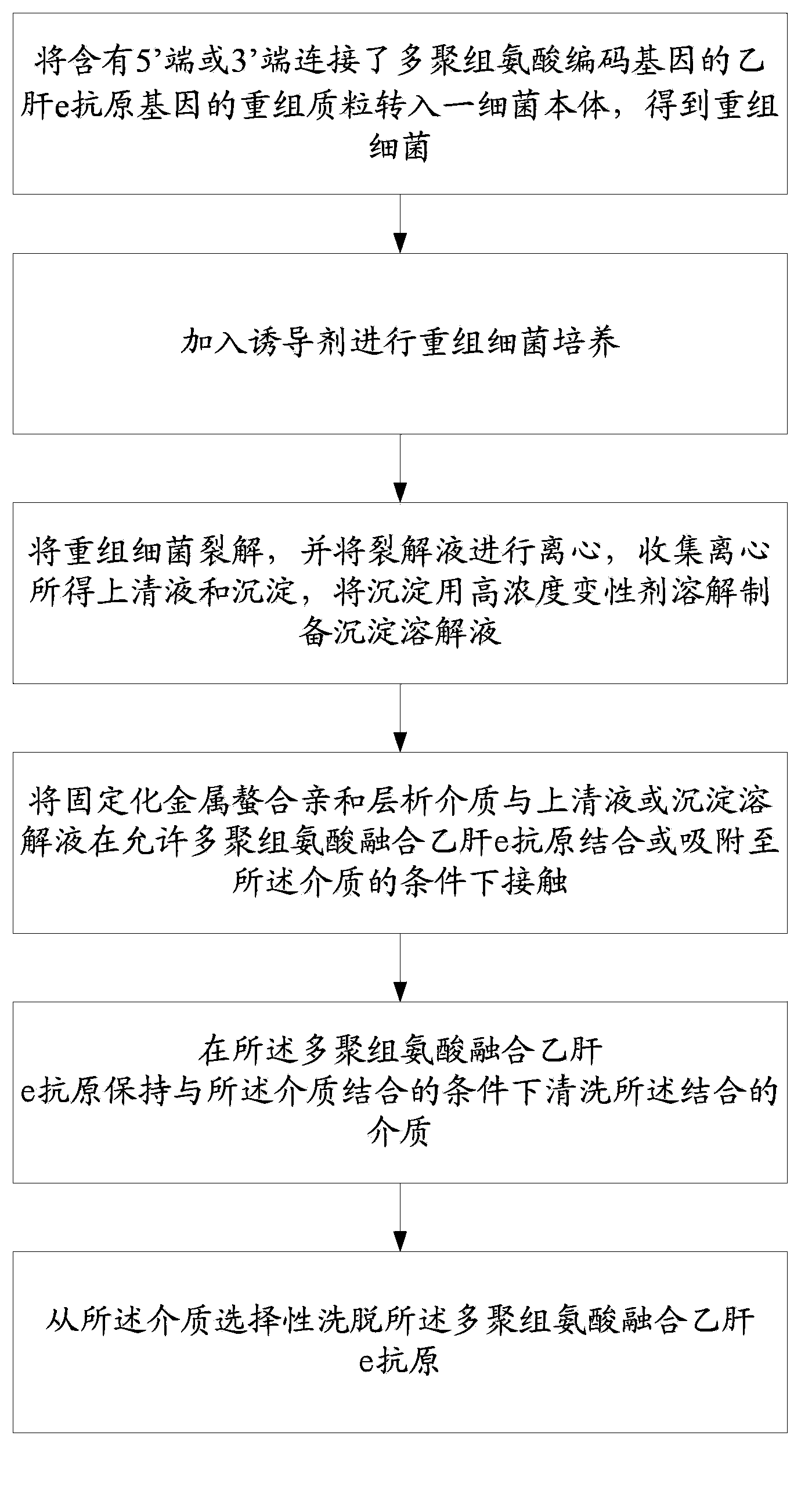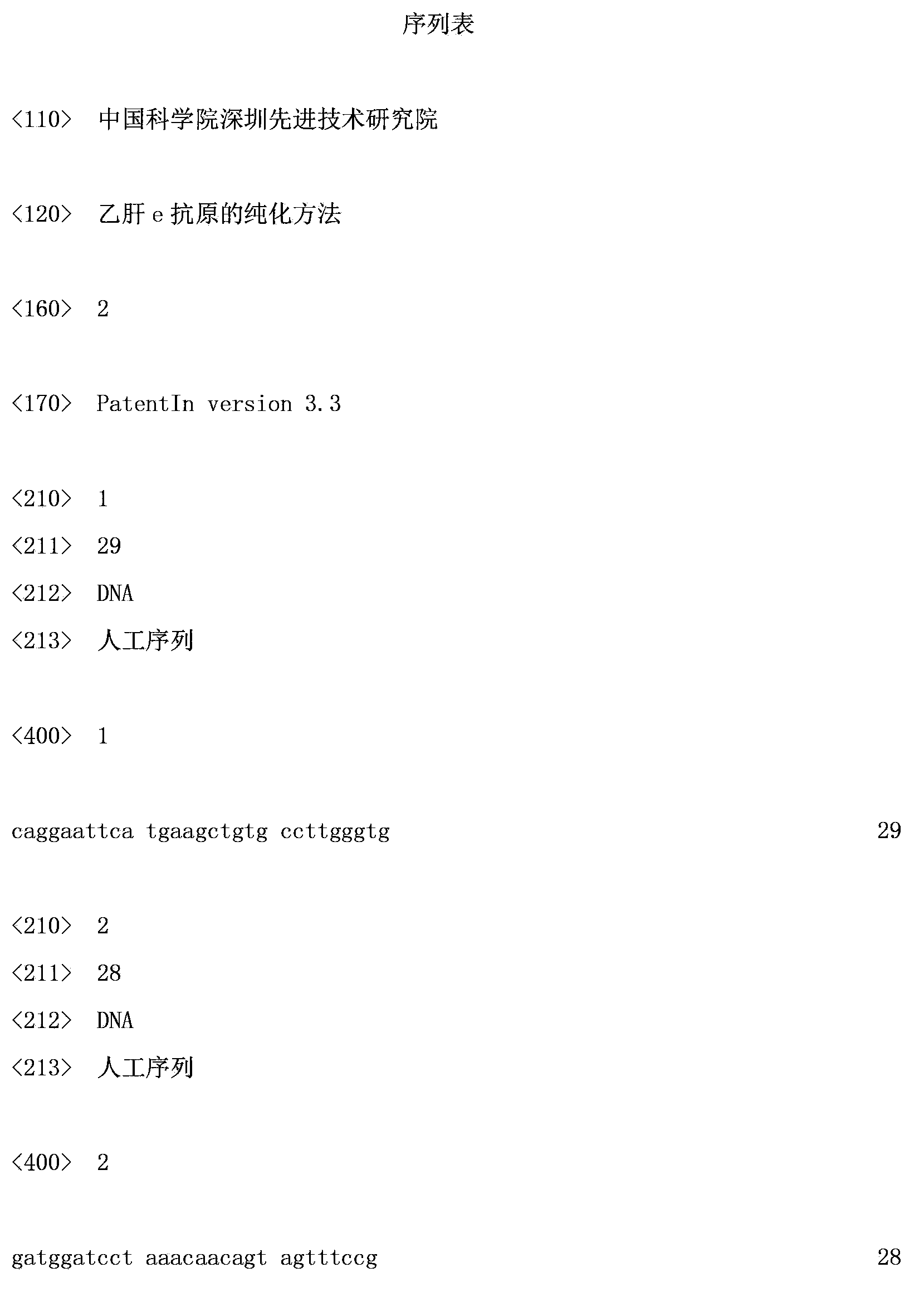Purifying method for hepatitis B e antigen
A purification method, hepatitis B technology, applied in the biological field, can solve problems such as cumbersome operation, and achieve the effect of simple and convenient operation and no impact on structure
- Summary
- Abstract
- Description
- Claims
- Application Information
AI Technical Summary
Problems solved by technology
Method used
Image
Examples
Embodiment 1
[0060] Acquisition of target sequence of hepatitis B e antigen (HBeAg) gene
[0061] Using the pADR-1 plasmid containing the HbeAg gene stored in the laboratory as a template, using SEQ ID No.1 containing the XmaI restriction site as the upstream primer, and using SEQ ID No.2 containing the Not I restriction site as the downstream primer PCR amplification was performed to obtain the HBeAg gene. After recovery and purification of the amplified product, a hexahistidine-encoded gene was introduced at the 3' end of the HBeAg gene to form a recombinant HBeAg gene, and the recombinant HBeAg gene was digested with Xma I and Not I, and then inserted into pET-28a that was also digested In -c(+), the recombinant plasmid pET-28a-c(+)-HBeAg containing the recombinant HBeAg gene was obtained. The recombinant plasmids were transformed into Escherichia coli for preservation.
[0062] Induced expression of recombinant plasmids
[0063] The recombinant bacteria were cultured by shaking,...
Embodiment 2
[0075] Acquisition of target sequence of hepatitis B e antigen (HBeAg) gene
[0076] Using the pADR-1 plasmid containing the HbeAg gene stored in the laboratory as a template, using SEQ ID No.1 containing the XmaI restriction site as the upstream primer, and using SEQ ID No.2 containing the Not I restriction site as the downstream primer PCR amplification was performed to obtain the HBeAg gene. After the amplified product is recovered and purified, a hexahistidine-encoding gene is introduced at the 5' end of the HBeAg gene to form a recombinant HBeAg gene, and the recombinant HBeAg gene is digested with Xma I and Not I, and then inserted into pET-28a that has also undergone double digestion In -c(+), the recombinant plasmid pET-28a-c(+)-HBeAg containing the recombinant HBeAg gene was obtained. The recombinant plasmids were transformed into Escherichia coli for preservation.
[0077] Induced expression of recombinant plasmids
[0078] The recombinant bacteria were cultur...
PUM
 Login to View More
Login to View More Abstract
Description
Claims
Application Information
 Login to View More
Login to View More - R&D
- Intellectual Property
- Life Sciences
- Materials
- Tech Scout
- Unparalleled Data Quality
- Higher Quality Content
- 60% Fewer Hallucinations
Browse by: Latest US Patents, China's latest patents, Technical Efficacy Thesaurus, Application Domain, Technology Topic, Popular Technical Reports.
© 2025 PatSnap. All rights reserved.Legal|Privacy policy|Modern Slavery Act Transparency Statement|Sitemap|About US| Contact US: help@patsnap.com



